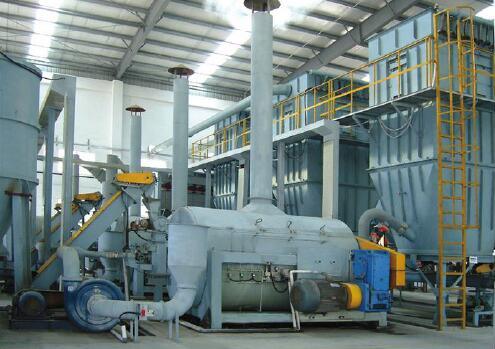The production of lead-acid batteries involves several key processes, each essential for manufacturing high-quality batteries.
- Grid Production: Lead grids serve as the framework for the active material in the battery plates. The grid production process involves casting lead alloys into grids of desired shapes and sizes. These grids are then pasted with lead oxide to form the positive and negative plates.
- Paste Mixing and Pasting: Lead oxide, sulfuric acid, and other additives are mixed together to form a paste. This paste is then applied to the grids to create the positive and negative plates of the battery. The pasting process involves spreading the paste onto the grid surfaces and curing it to form the active material.
- Plate Curing: After pasting, the plates undergo a curing process to allow the active material to fully bond to the grid. Curing helps improve the adhesion of the active material and enhances the battery’s performance and longevity.
- Plate Formation: The newly pasted plates are subjected to a formation process, also known as “initial charging.” This process involves charging the plates to convert the lead oxide into lead dioxide on the positive plates and lead sulfate on the negative plates. Plate formation helps activate the battery and establish the desired electrochemical properties.
- Assembly: Once the plates are formed, they are assembled into the battery cell. Typically, multiple positive and negative plates are interleaved with separators to prevent short circuits. The assembled plates are then inserted into a battery case or container.
- Electrolyte Filling: The battery case is filled with a sulfuric acid electrolyte solution, which provides the medium for the electrochemical reactions to occur. The specific gravity and concentration of the electrolyte are carefully controlled to ensure optimal battery performance.
- Sealing and Venting: After electrolyte filling, the battery is sealed to prevent leaks and ensure safety. Vent caps or valves are installed to allow the release of gases produced during charging and discharging, thereby preventing pressure buildup inside the battery.
- Formation and Testing: The assembled batteries undergo a formation process where they are subjected to controlled charging and discharging cycles to further activate the plates and stabilize performance. Each battery is then tested for capacity, voltage, and other performance parameters to ensure quality and reliability.
- Final Inspection and Packaging: Once testing is complete, the batteries undergo a final inspection to verify quality and adherence to specifications. Approved batteries are then packaged and prepared for distribution to customers.
These production processes require careful quality control and adherence to industry standards to produce reliable and high-performance lead-acid batteries for various applications. Additionally, environmental and safety regulations must be followed to ensure the responsible handling and disposal of lead and other battery components.


